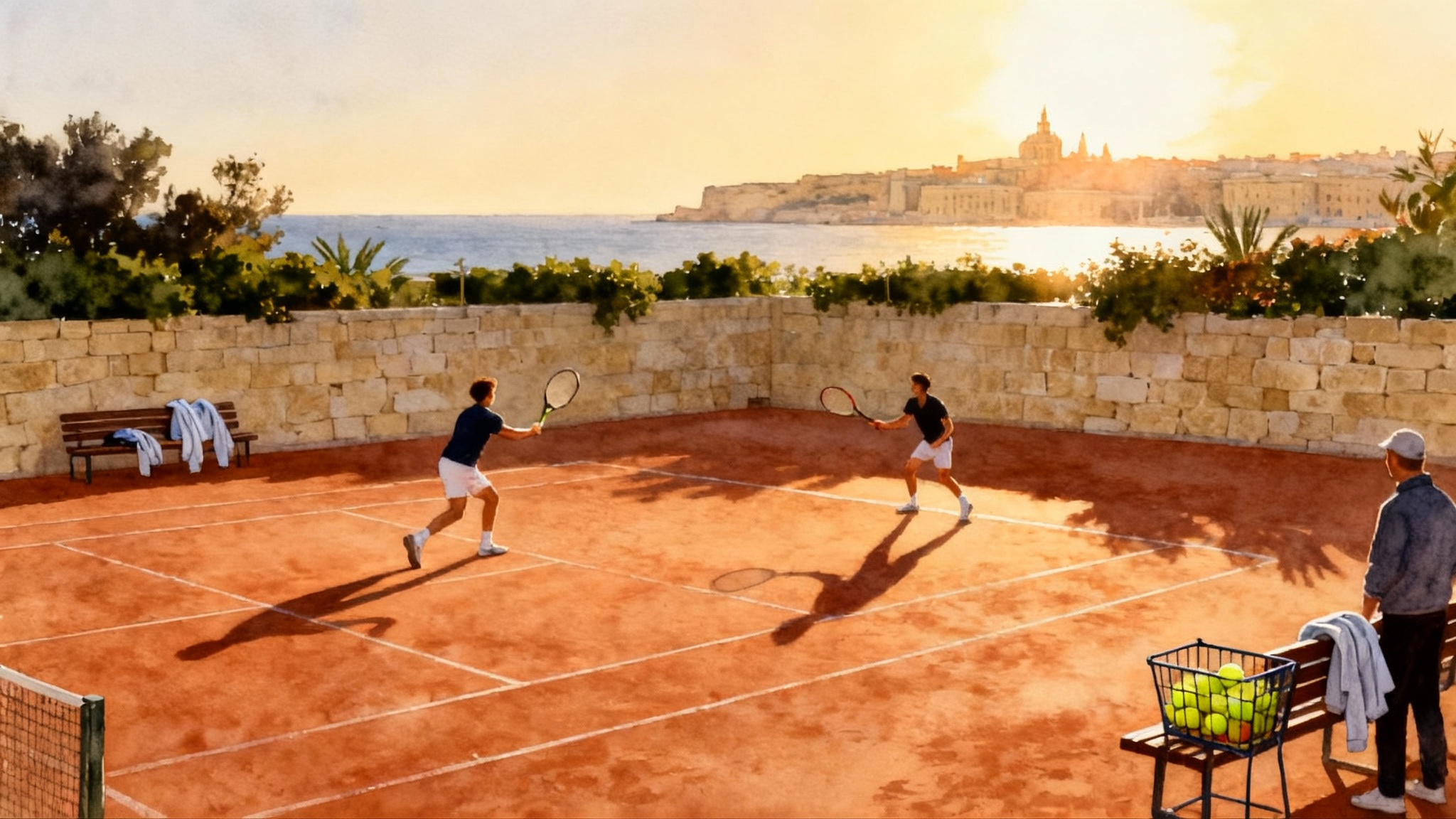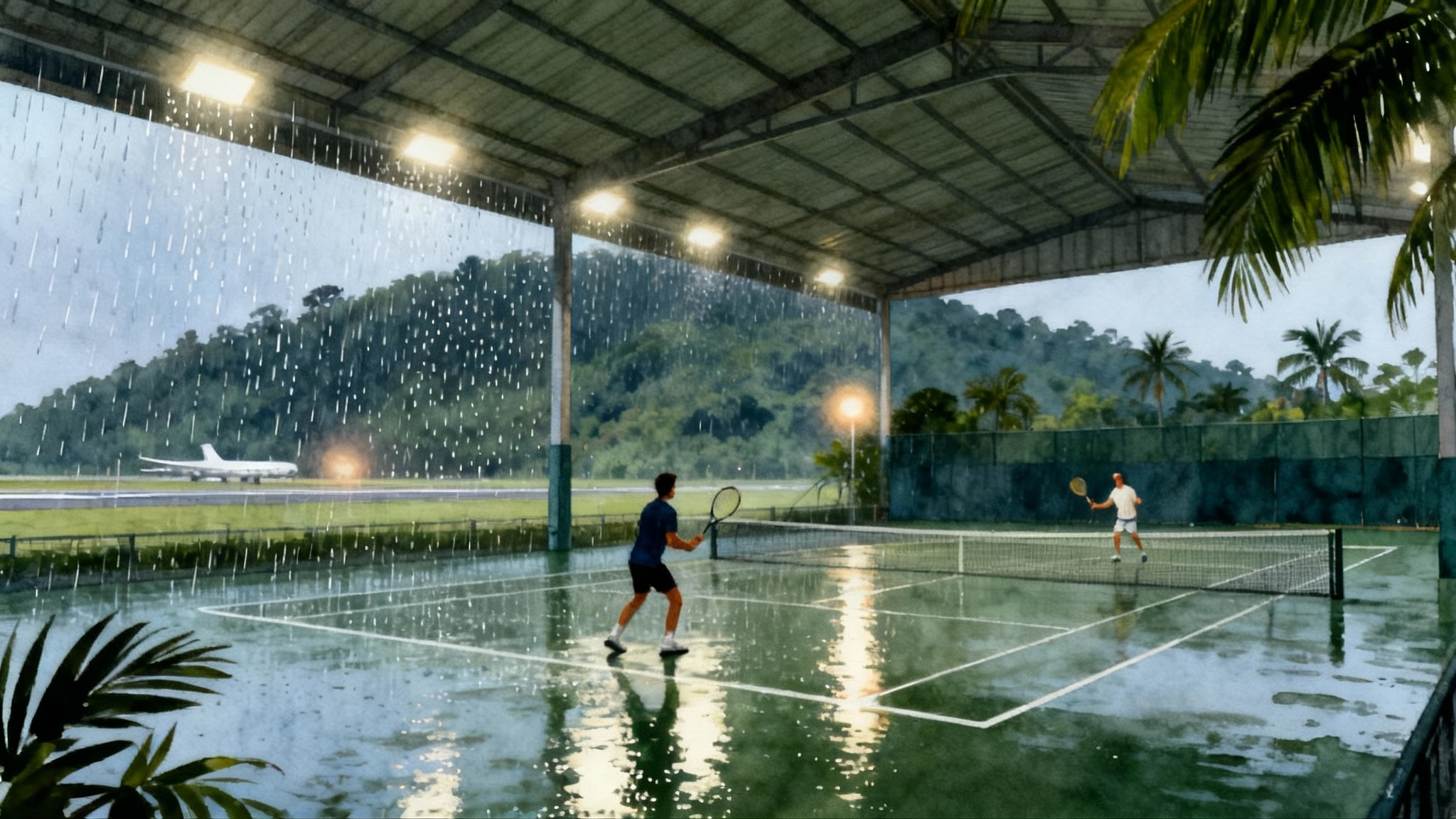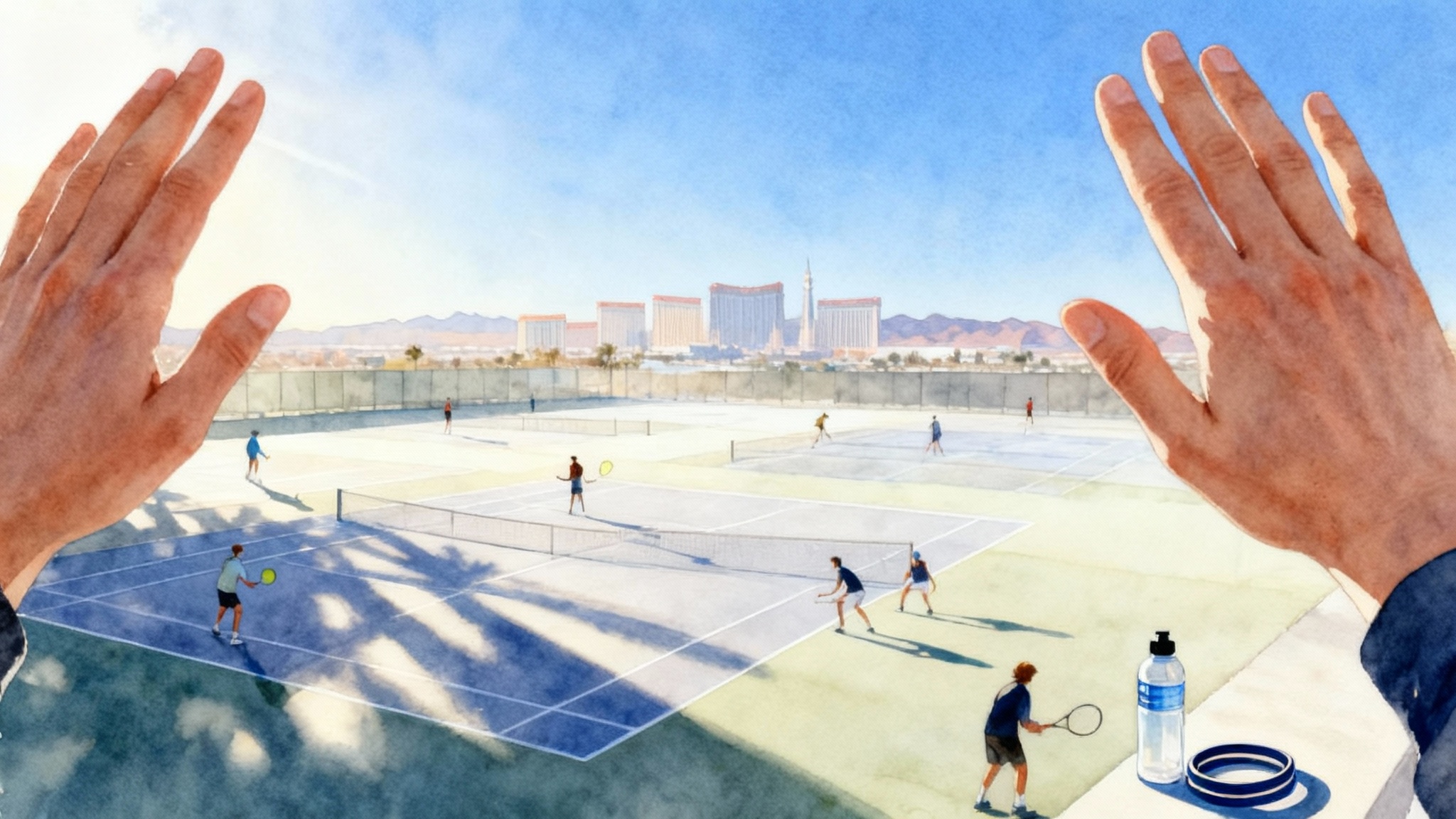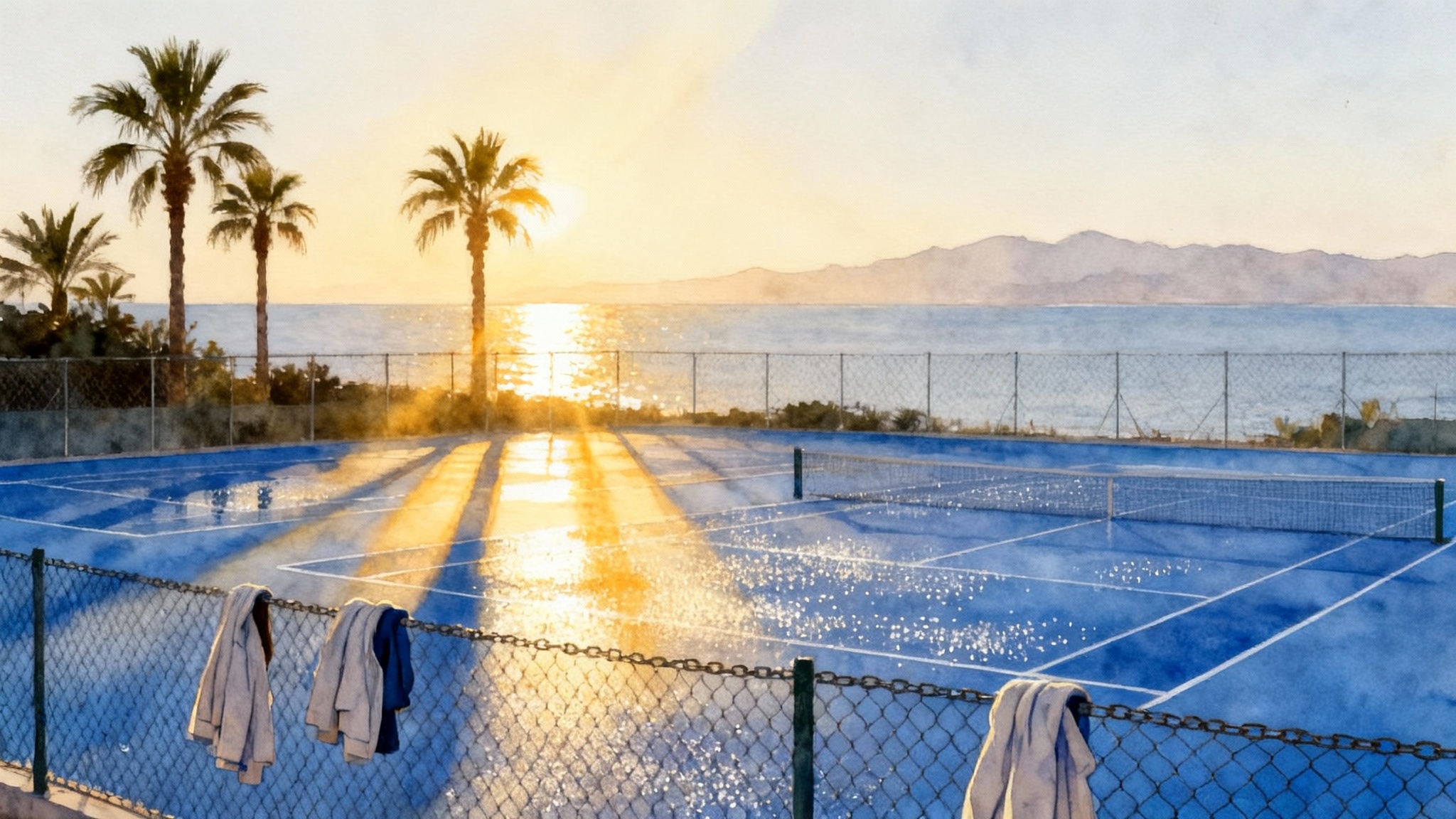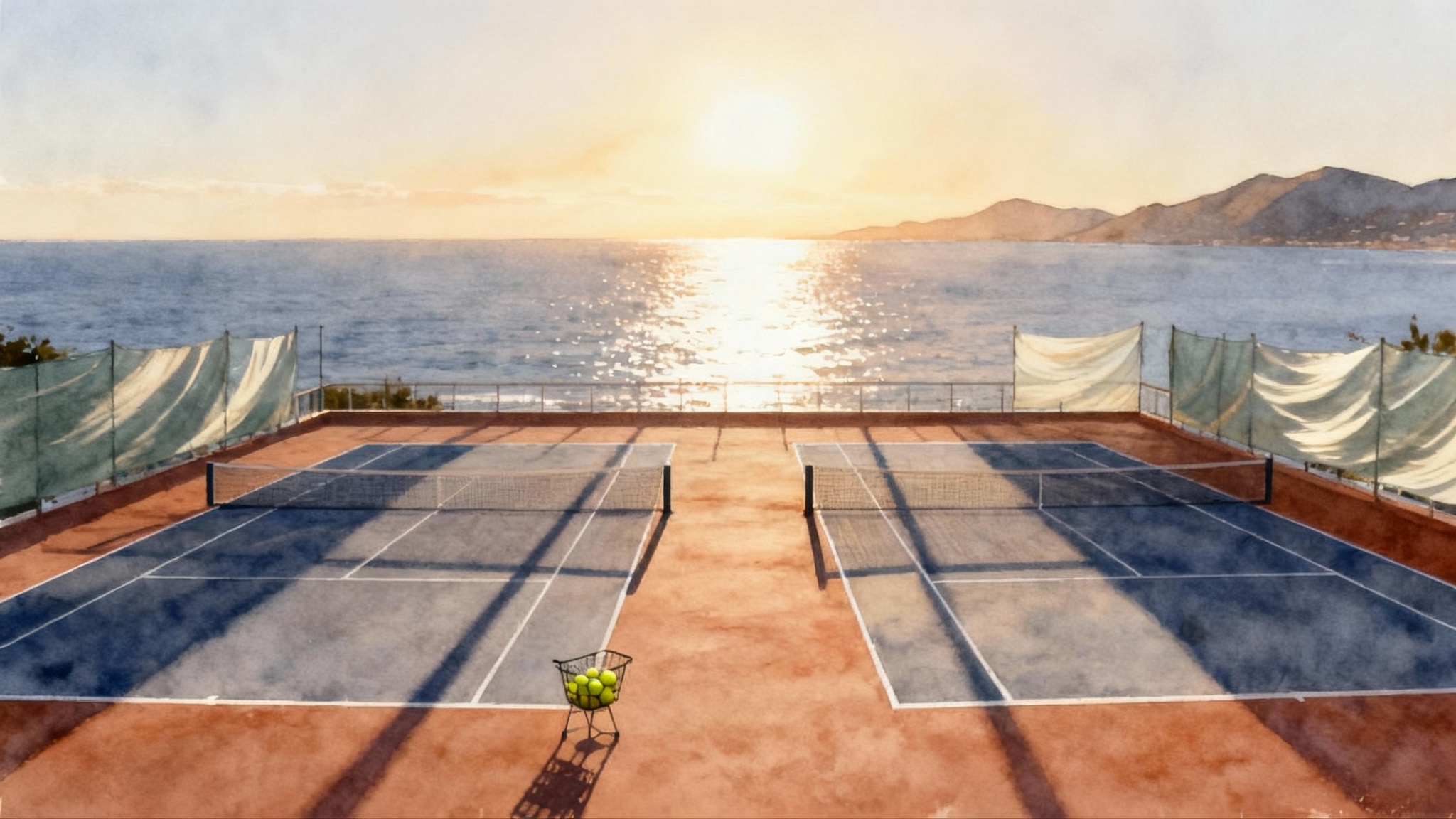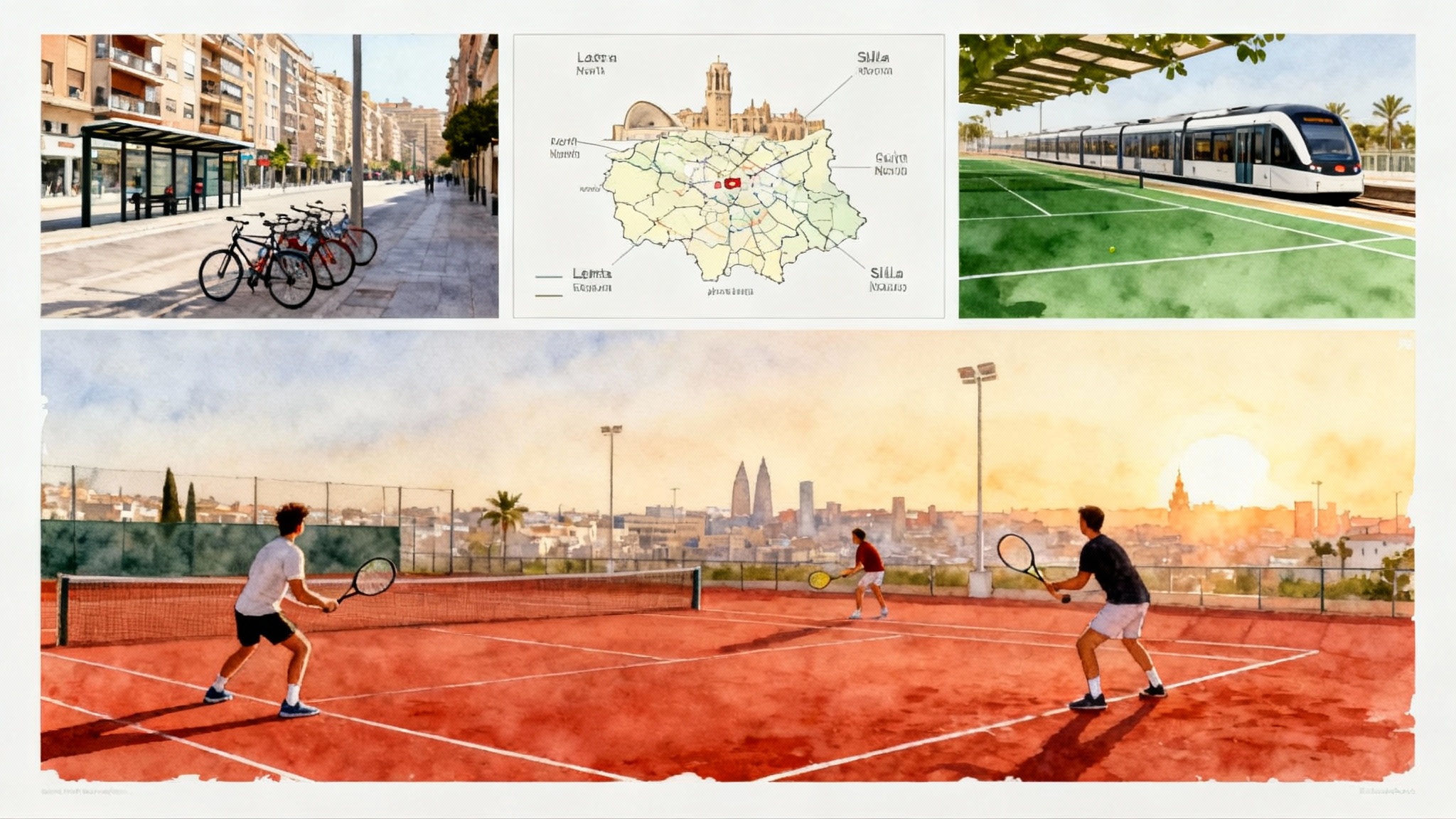Bali Monsoon-Smart Tennis 2025–26: Umalas vs Sanur Guide
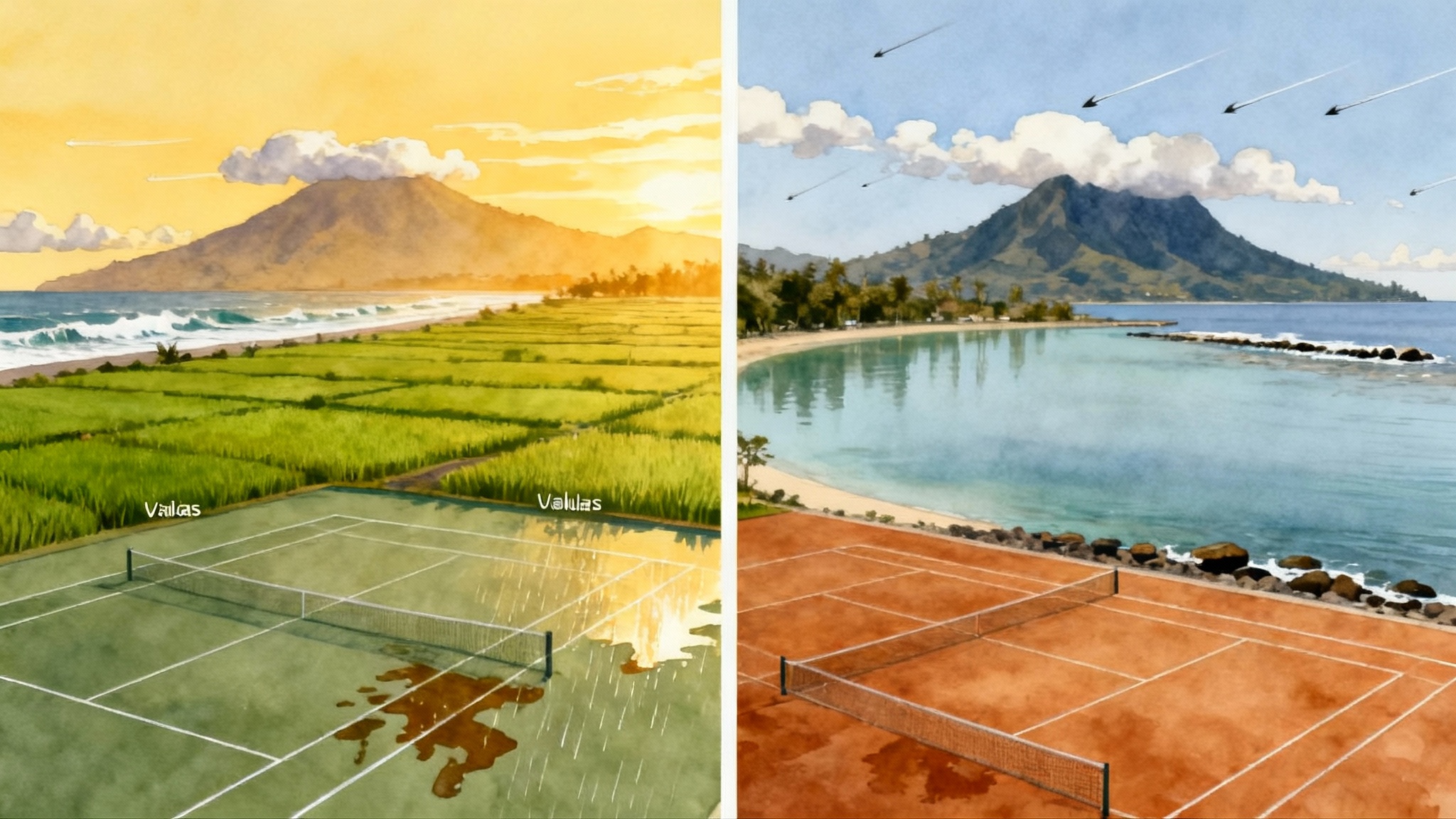
Why a monsoon-smart plan beats guesswork
Bali rewards players who plan with the weather, not against it. The island’s wet and dry seasons shape everything from ball flight and bounce to recovery and scheduling. If you know when the afternoon sea breeze stiffens in Sanur or how quickly a slick baseline dries in Umalas, you can stack your calendar with reliable sessions instead of rain delays. Think of Bali as a stadium where the roof and fans switch settings by month. Your job is to choose the right side of the arena and the right time slot.
This guide puts climate first, compares the southwest coast around Umalas and Canggu with the southeast coast around Sanur, and uses the two Liga.Tennis Center and Academy locations as anchors for a practical training plan. We cover month-by-month windows for 2025-26, on-court adaptations for wind and humidity, and logistics that keep your budget and time in balance. For seasonal context, start with the BMKG seasonal outlook, which summarizes Indonesia’s monsoon timing and regional rainfall patterns each year. For covered court tactics in similar humidity, see our Phuket covered courts guide.
Bali’s two coasts, one monsoon: what actually changes
South Bali shares one broad climate engine, but micro-conditions differ enough to change your session quality. Here is how it plays out for tennis.
Rain timing
- November to March is the wet season. Showers often come in late afternoon or overnight, with the heaviest spells between December and February.
- April and October are shoulder months. Expect mixed days with fast-drying courts when showers are brief.
- May to September is the dry season. Rain is less frequent, and courts bake dry quickly after any sprinkle.
Practical implication: mornings are usually the safest booking on both coasts in the wet months. In the dry months, you can stretch to late morning or midafternoon if you manage heat well.
Wind profiles
- Sanur, on the southeast, sees steadier southeast trade winds during May to August. The lagoon and reef keep the water calm, but afternoons can be breezy on court. Expect a consistent cross or onshore breeze that rewards heavy spin and a lower, driving trajectory.
- Umalas and neighboring Canggu pick up a regular afternoon sea breeze most months. In the dry season this breeze may start later than in Sanur, and in the wet months it can slacken once clouds build. Expect gusty pockets near open rice fields.
Practical implication: if you want a wind-technique block, book more dry-season afternoons in Sanur. If you want calmer ball flights for technical rebuilds, favor early mornings on either coast, with Umalas often feeling slightly calmer before 9 a.m.
Humidity and heat index
- Humidity peaks in the wet season, raising the heat index and making recovery feel slower.
- In the dry season, the air is less humid but still warm. The combination of sun and wind can lead to stealth dehydration.
Practical implication: wet season calls for shorter work bouts with longer rest and aggressive cooling. Dry season calls for earlier sessions and steady electrolyte intake even when you do not feel drenched.
Month-by-month training windows for 2025-26
Below is a practical calendar for October 2025 through October 2026. Use it to choose coast, time of day, and format.
- October 2025: Shoulder month with building heat and first showers late in the month. Best bets are 6:30 to 9:30 a.m. anywhere. For afternoon play, choose Sanur only if you welcome wind training. Evenings are excellent in Umalas as the air calms and courts cool.
- November 2025: Monsoon onset. Prioritize mornings on covered or quick-drying courts. Keep match play to early starts. If rain forces cancellations, switch to indoor-style footwork ladders and hand-feed drills under roofing.
- December 2025: Wettest stretch begins. Book 6:30 to 8:30 a.m. and again 7:00 to 9:00 p.m. Avoid 2:00 to 5:00 p.m. Lightning risk and squalls are higher. Sanur’s breeze can help evaporative cooling on non-rainy afternoons, but plan to pivot.
- January 2026: Peak wet season. Treat tennis like two-a-days with low volume. Technique mornings, mobility or video analysis nights. If you must play afternoons, pick roofed courts and keep sets short.
- February 2026: Still wet, but more gaps appear. Try 7:00 to 9:00 a.m. and 6:30 to 8:30 p.m. Sanur may feel windier in late afternoons, which is useful for serve stability training.
- March 2026: Transition month. Increase volume to two-hour morning blocks. Start introducing afternoon conditioning in Sanur to learn wind margins.
- April 2026: Prime shoulder. Both coasts are excellent. Schedule match ladders from 8:00 to 10:00 a.m., point-play sets 4:30 to 6:30 p.m. Alternate bases to sample both wind profiles.
- May 2026: Dry season arrives. Sanur afternoons are breezy. Use the wind to train heavy topspin, kick serves, and margin over the center strap. Umalas offers steady mornings for precision work.
- June 2026: Dry and dependable. Build volume. Double sessions are viable with midday recovery. Rotate 90-minute quality blocks instead of marathon grinds.
- July 2026: Peak dry season. Sanur winds are most consistent. Schedule tactical drills that bias crosscourts into the breeze and down the line with the wind. Umalas is a match-play haven in calm mornings.
- August 2026: Similar to July. Insert a heat-adaptation microcycle by nudging one session to late morning, but guard against sun exposure with strict cooling.
- September 2026: Winds ease. Great for confidence blocks, serve targets, and offense patterns. Umalas evenings are smooth and quick.
- October 2026: Another shoulder. Expect the first unstable afternoons late in the month. Morning sessions remain premium on both coasts.
Umalas vs Sanur: pick your base by goals and budget
Training environment
- Umalas and Canggu: Cafes and gyms within minutes, lively tennis community, and a quick hop to additional courts if you want sparring variety. Afternoons can be warm with a smaller but present sea breeze.
- Sanur: Quieter streets, family-friendly feel, and steadier afternoon wind in the dry season. Excellent for structured camps that mix wind exposure and recovery walks along the beachfront path. For broader island wind strategy, compare our Tenerife vs Gran Canaria winter tennis guide.
Court coverage and rain resilience
Both areas include venues with roofed or semi-covered courts plus well-drained outdoor hard courts. Coverage matters most from November to February, when ten minutes of downpour can flip a session. Book sites with roofing for the core of your wet-season block, then expand to open courts as windows appear. In the dry season, covered courts protect you from midday sun and enable longer drills without heat spikes.
Pro tip: ask about squeegee crews, blowers, and surface texture. A well-trained crew turns a 45-minute rain delay into a 15-minute reset, and slightly rougher acrylic topcoats recover traction faster after showers.
Access and logistics
- Airport proximity: From Ngurah Rai International Airport to Umalas is roughly 12 to 14 kilometers depending on route, and to Sanur roughly 14 to 16 kilometers. In light traffic, either trip can be under 40 minutes. At peak hours, allow 60 to 90 minutes.
- Moving between bases: Door to door between Umalas and Sanur ranges from 45 to 75 minutes based on time of day. If your schedule hinges on a specific afternoon wind, do not plan same-day cross-island hops.
- Transport: Ride-hailing apps work well. If you scooter, pack a waterproof cover for your racket bag and avoid slick paint lines after rain.
Budget tiers and where they shine
- Training-first budget: Guesthouses near Umalas backroads or Sanur’s main street put you five to ten minutes from courts. Save money and spend it on restringing and extra session slots.
- Midrange comfort: Small hotels or serviced apartments with good air conditioning and quiet rooms. Ideal for two-a-days where sleep quality trumps views.
- Villa setups: Split with teammates to get a pool for cold plunges and space for mobility work. Better value when you occupy most bedrooms.
Heat management that actually works
Heat and humidity do not just make you sweat more. They change your biomechanics and decision making. Plan for it.
- Night-before routine: Add 500 to 700 milliliters of electrolyte fluid at dinner, then cut fluids one hour before bed for sleep quality. Lay out two shirts, two overgrips, and a dry towel so you can swap at the first heavy sweat.
- Pre-cooling: Start each morning session with five minutes of forearm cooling and a cool, not icy, drink. Avoid shock-cold gulps that upset your stomach.
- Work-to-rest ratio: In wet months, keep drills to 8 to 10 ball reps with a 45 to 60 second reset. In dry months, 12 to 15 ball reps with 30 to 45 seconds can work if you shade during rest.
- Sodium strategy: Use salty snacks or electrolyte tablets. Coconut water is fine for light hits but is short on sodium for longer sets.
- Skin and grip: Apply sunscreen 20 minutes before play and reapply between sets. Use moisture-wicking overgrips, carry rosin, and rotate wristbands every 30 minutes.
- Red flags: If your rating of perceived exertion spikes while ball quality drops, you are overheating. Cut the work, extend rest, or end the set. No session is worth heat illness.
Wind-smart tennis: make Sanur your lab, Umalas your control
You can turn Bali’s crosswinds into an asset.
- Serve: Train a slightly higher toss into the breeze and a lower, faster toss with the wind at your back. Build a kick serve that climbs over the shoulder in Sanur’s afternoon trades.
- Groundstrokes: Aim two strings inside the sideline when hitting into the wind. With the wind, drive through the court and lower net clearance. In Umalas’s calmer mornings, lock in technical checkpoints without wind noise.
- Volley and overheads: Shorten the swing and move early. Use the breeze to drop volleys short crosscourt.
Schedule pattern: three days in Umalas mornings for precision, two afternoons in Sanur for wind adaptation, one light recovery day, and one match day wherever the surface feels truest that week.
Sample training scripts you can plug in
-
Technical rebuild morning in Umalas (90 minutes):
- Dynamic warm-up and shadow swings 10 minutes
- Hand feeds on contact height and spacing 15 minutes
- Crosscourt forehand tolerances with targets 20 minutes
- Serve bucket with 60 percent effort, video check 15 minutes
- Pattern play: forehand inside out into open court 20 minutes
- Cooldown and mobility 10 minutes
-
Wind lab afternoon in Sanur (75 minutes):
- Breezy footwork ladder 8 minutes
- Serve into the wind, kick and slice 15 minutes
- Crosscourt neutral rallies into the breeze 20 minutes
- Down the line acceleration with the wind 12 minutes
- Short-set tiebreaker start at 3 to 3 to test decision making 15 minutes
- Forearm cooling and stretch 5 minutes
-
Wet-season rain contingency (60 minutes under roofing):
- Mini-tennis with precise targets 15 minutes
- Hand-fed approach and volley patterns 15 minutes
- Serve toss rhythm plus second-serve accuracy ladders 15 minutes
- Mobility and trunk strength 15 minutes
Travel logistics that save hours
- Booking windows: In wet months, favor flexible bookings with rescheduling options. In dry months, lock in prime morning slots a week out.
- Strings and tension: Bring an extra reel or at least two spare sets. In humid months, consider increasing tension by 1 to 2 pounds if you swing big, or hold steady and switch grips more often if you like touch.
- Regrip cadence: Expect one fresh overgrip every 60 to 90 minutes in wet months. Pack double what you think you need.
- Footwear: Use an outsole with reliable herringbone and avoid overly slick hard-court shoes in January and February. Post-rain, test traction with split steps before full sprints.
- Medical and recovery: Identify a nearby physio and a pharmacy that stocks electrolytes and kinesiology tape. Budget for one recovery session per training microcycle.
How to use Liga.Tennis across two sites
Liga.Tennis operates on both sides of the island, which lets you match your microclimate to the day’s goal. Mornings when you want calm precision work, base in Umalas. Afternoons when you want honest wind, base in Sanur. Check programming, court types, and coaching availability through the official channels at Liga.Tennis Center and Academy and build a weekly plan that pivots between locations without losing coaching continuity. For program details and community context, browse the Liga.Tennis Academy Bali profile.
Pro tips for the dual-site strategy:
- Keep one coach as your technical anchor, even if you switch venues. Film key checkpoints so cues follow you across courts.
- Stagger your sparring partners by coast. Power baseliners in calm Umalas mornings, scramblers and counterpunchers in Sanur afternoons where wind stretches points.
- Store a light rain shell and spare socks in your bag during wet season. A 10-minute squall is nothing if you can change and continue.
Choose your base by level and goal
- Beginner and early intermediate: Aim for calm sessions to groove contact. Book Umalas mornings for consistency, then sprinkle in Sanur mornings once a week to learn simple wind aims.
- Intermediate building weapons: Spend two afternoons a week in Sanur to master spin and depth control in breeze. Keep technical mornings in Umalas for clean reps.
- Performance players and teams: Use a split base. Three mornings Umalas for high-quality volume, two windy afternoons Sanur for serve plus one and transition patterns under pressure, one match day rotating sites, one active recovery day.
- Short-stay travelers: If you have 4 to 5 days, choose one base that matches your goal. Want rhythm and volume with fewer variables? Pick Umalas near roofed courts. Want adaptation and resilience? Pick Sanur in the dry season.
The bottom line
Bali can be the best open air training lab in Southeast Asia if you let weather be your performance coach. Work with the island, not against it. Use mornings in either Umalas or Sanur for reliable ball quality, adopt Sanur’s dry-season afternoons as your wind classroom, and protect wet-season blocks with roofed courts and flexible scheduling. With a simple plan and two bases that complement each other, your 2025-26 calendar shifts from uncertain to inevitable: more quality hits, smarter adaptation, and a better player by the time the next season arrives.
